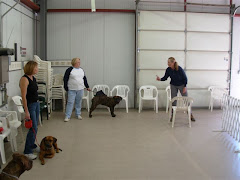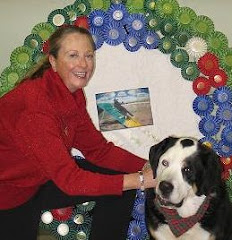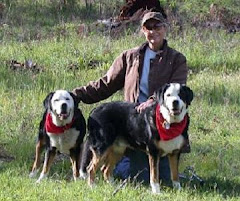
Can only four principles really save homeless animals and keep everyone safe?
By Jennifer Bristol and Josh Blye, reprinted with permission from That Touch of Pit
Recently, I was lucky enough to meet Bill Bruce when he shared his Calgary Model to some of us animal welfare folks in NYC. Bruce oversees the Animal Services for the city of Calgary and is well respected in the animal welfare community. His philosophy and principles are simple, yet so effective. The Model advocates responsible pet ownership based on the following four principles:
• License and provide permanent identification for pets.
• Spay or neuter pets.
• Provide training, physical care, socialization and medical attention for companion pets.
• Do not allow pets to become a threat or nuisance in the community.
I can wax poetic about him and the model, but I think the numbers speak for themselves: • Spay or neuter pets.
• Provide training, physical care, socialization and medical attention for companion pets.
• Do not allow pets to become a threat or nuisance in the community.
• Calgary population: 1.1 million
• Number of pet dogs: 110,000
• Reported dog bites: less than 150 (50 being in-home incidents)
• 90% of dogs are licensed.
And, the cherry on top of this sundae: his animal services agency is solely funded by licensing fees and other enforcement fees. What I truly love about this model is that it sets the owner up to succeed! How many times have I told dog owners that we need to set the dog up to succeed. Need a license, you can go up to any Animal Control Officer and get one on the spot. Fido leaps over the fence, if an AFO finds him and scans him, he will bring it back to your house for a nominal fee — no impoundment at all!• Number of pet dogs: 110,000
• Reported dog bites: less than 150 (50 being in-home incidents)
• 90% of dogs are licensed.
Bruce will admit: no documentation is needed to prove your dog is altered for your license application. However, if it is discovered that you lied, you will be fined $500! If the government is asking pet owners to follow some simple rules to keep everyone safe, it is only logical that the government enforce these laws

What’s more: all pet owners who license their pets receive an I Heart My Pets rewards card which offers discounts and deals from everything from pet services to travel accommodations. And, who doesn’t want a reward?
Here’s a little anecdote that shows if a system like this were in place in New York City, how we could keep even just one dog out of the pound.
Just this week, in my neighborhood, there was an incident of an off-leash dog attacking another dog pretty severely (while it was next to its toddler human sibling). The attack was covered by a writer for DNAInfo, Carla Zanoni, whose column specifically addresses issues in the Inwood community, and I appreciate Carla’s piece for providing the straight facts and not sensationalizing the story.
In this case, the “attacking dog” was not wearing an ID tag, nor was it microchipped. This would also lead us to believe that the owner had not obtained the necessary license, which is all contrary to Bill Bruce’s first principle (“License and provide permanent identification for pets”).
Information is not given as to whether or not the “attacking dog,” who is female, is spayed or not. So let’s give the owner some credit and assume that she is indeed spayed. Check mark number one according to Bruce’s model, and the only one we’ll find throughout.
Principle number three specifically addresses socialization. It’s safe to say, I think, that the “attacking dog” probably hasn’t had much in the way of socialization with other dogs. However, there are some dogs who are just predisposed to not be social with other dogs, and if that is indeed the case, you should recognize that and take additional measures to make sure everyone stays safe.
And as for allowing the pet “to become a threat or nuisance in the community”? Well, I think the people of this community probably feel adequately threatened.
This story has brought up many neighborhood issues including off leash dogs, which can be a very heated issue. Leash laws are important and need to be in place to keep animals and people safe. No matter what the size or temperament of the dog. So, aside from critiquing the “attacking dog’s” owner for not being thoroughly responsible, the law enforcement is also at fault in this whole situation.
New York City dog license laws require every dog, while in public, to always be on a leash no longer than six feet long. This law is almost never enforced. The number of people we see daily walking dogs off leash, without tags, on 20 foot long retractable leashes, etc. is astounding.
If the laws are enforced properly in every instance where they are not being adhered to, as is shown by Bill Bruce’s Calgary Model, the number of dogs in homes could be exponentially greater than it is now, and maybe, just maybe, our city’s animal shelters wouldn’t be quite so crowded.


















No comments:
Post a Comment